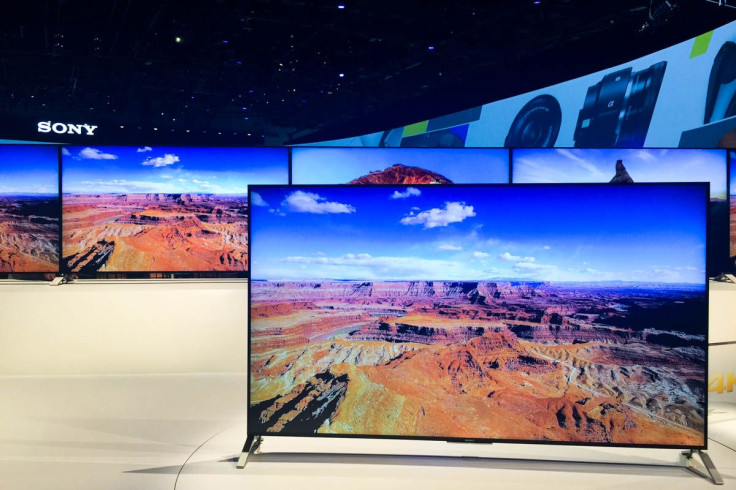4K TVs: 5 Reasons Why You Should Hold Off On Upgrading To Ultra HD

Be honest: When was the last time you bought a new television set? Six years? Seven? Ultra high definition, aka 4K, is the latest attempt by TV manufacturers to get people to upgrade from their old HDTVs.
With falling prices -- several models have dipped below the $1,000 mark -- they’re beginning to look more attractive than ever. But that doesn’t mean you should buy one. Here are five great reasons to stick with 1080p HD technology, for now.
Lack Of Options
Even as prices have substantially dropped, you’re still limited to a handful of choices from vendors such as LG Electronics Inc., Samsung Electronics Co. Ltd. and Vizio Inc.. The cheapest of the brand-name sets is a 43-inch Vizio panel, which is priced at $599. For consumers considering going off-brand, an even cheaper 39-inch panel made by the Seiki Digital unit of China’s Tsinghua Tongfang Co. is also available at Walmart for $349.
Here’s the problem: If you want a bigger screen, it starts to get much more expensive. Fifty-inch sets can be had for $1,000. But, when the displays get any larger, the prices easily surge up to at least $1,500 at the low end.
Good Old HD Is Better Than Ever
By slashing the prices on 4K sets, manufacturers may have inadvertently created a new obstacle for the technology’s adoption. As 4K set prices fall, so do the prices of equivalent-size or larger 1080p HD sets. As a result, customers now have hundreds of options that each cost less than $1,000, with some models as large as 60 inches, which come with fancy features such as 3D support, curved screens, smart apps and superthin designs.
When it comes to TV sets, size matters more to consumers than does an incremental improvement in resolution. “Whenever people are buying a new TV, they’re generally going for a larger screen,” said Jack Wetherill, senior market analyst at Futuresource Consulting. “If they’re in the store, they’re thinking about size.”
While a shopper can easily spend $1,000 for Vizio’s 50-inch 4K set, he or she can get an even larger 1080p screen of as large as 60 inches from LG, Samsung, Sharp Corp. or another manufacturer for the same price. It’s possible to see the difference between the two technologies, but, to do so, viewers will have to sit closer to the sets, around 5-6 feet. The median distance most viewers will watch their TVs is about 9 feet, according to research by RCA engineer Bernard Lechner.
4K Content Still Isn’t There
When it comes to standard HD content, 4K TV sets can upscale it easily to fit the screen. But native content for the format continues to lag. Content providers such as Comcast, DirecTV, Dish, Netflix and Sony are attempting to push it along with films and TV shows shot for 4K, as well as new set-top boxes. But, for now, there are comparatively few things to watch in 4K resolution: They include Sony’s “Powers” original series, as well as “Breaking Bad” and “House of Cards” on Netflix.
You’re Watching Less TV, Anyway
While television remains the largest arena for video consumption by adults, most watchers aren’t tethered to the living room when it comes to watching their favorite series. Thanks to the rise of streaming-video services such as Netflix and HBO Now, viewers can watch video clips, movies and even live TV from just about anywhere and on almost any device.
This especially applies to millennials, who make up about 60 percent of the viewers watching TV and video on smartphones each month, according to comScore. And, in many cases, tablet and personal-computer monitors have displays with resolutions greater than 1080p. They include the iPad Air 2 with 2048-by-1536-pixel resolution and the 15-inch Retina MacBook Pro with 2880-by-1800-pixel resolution.
So, Best To Wait At Least A Few Months
Right now, 4K may not be the best deal, but give it a few months: More content is anticipated this year, and vendors such as Sharp are expected to release comparatively cheap 4K sets.
That said, the industry move to drop 4K prices could get the ball rolling for an upgrade cycle in 2015. Of the 40 million TVs that are expected to be sold in North America this year, about 5 million, or 12.5 percent, will be 4K sets, according to a forecast by Futuresource Consulting. That’s up substantially from last year, when only 1.2 million 4K sets were sold.
© Copyright IBTimes 2024. All rights reserved.






















